Hoisin beef is a favorite weeknight meal in my house. It’s packed with flavor from a combination of sweet-savory hoisin sauce, salty and rich soy sauce, and spicy, umami-packed gochujang and turns simple stir-fried ground beef into a crave-worthy meal.
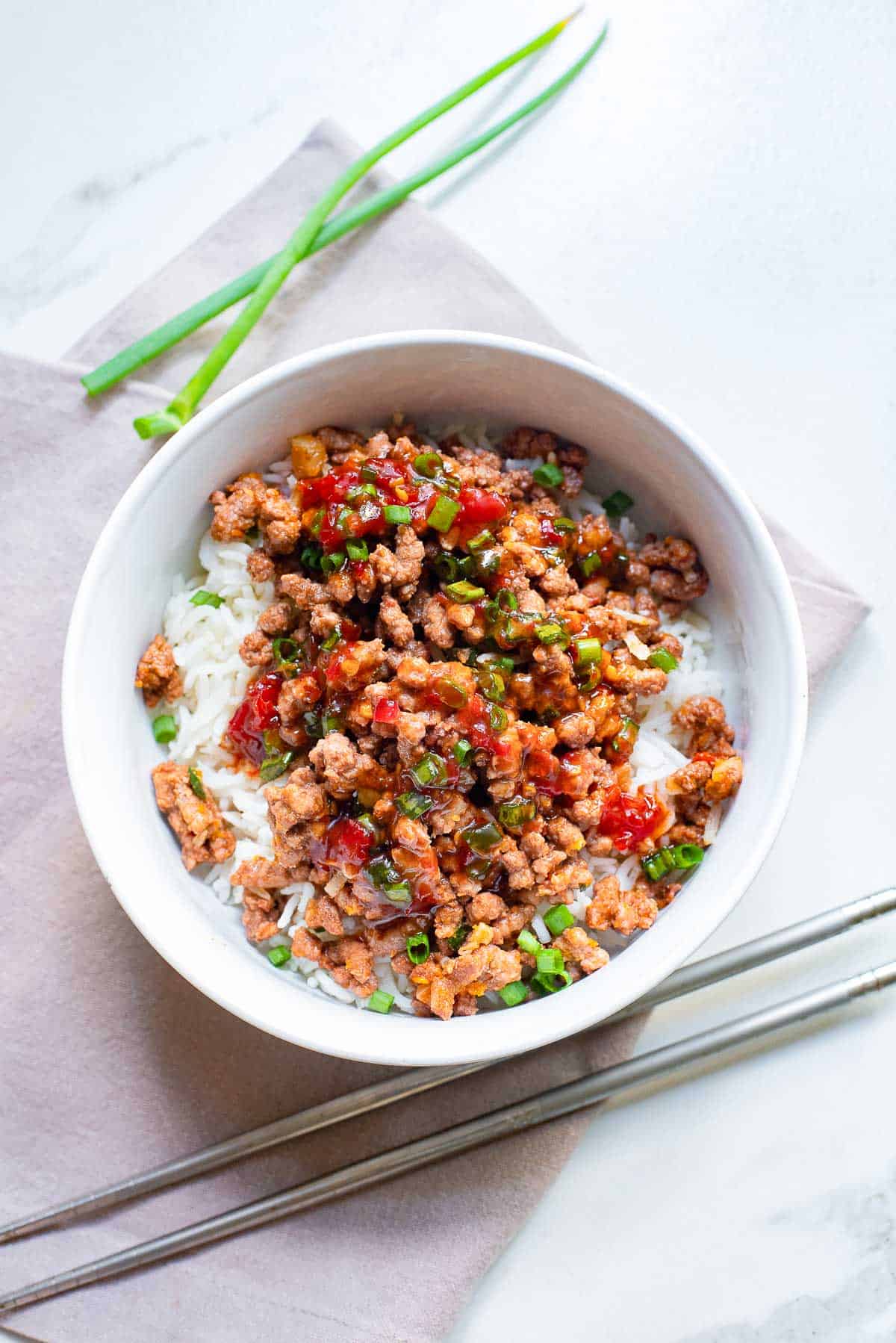
This post may contain affiliate links. As an Amazon Associate, I earn from qualifying purchases. See my Affiliate Disclosure.
Garlic and green onions add a fresh counterpoint to the deep, fermented flavors of soy sauce and gochujang, and sesame oil adds a nutty counterpoint. Best of all, this dish is also incredibly easy to make, making it a great option for busy weeknights.
Why You’ll Love This Dish
If you love sweet-savory-spicy Asian flavors and the convenience of ground beef, this Hoisin Beef should be at the top of your must-try list. Here’s why I think you’ll immediately fall for this dish:
- Flavor explosion: Hoisin sauce infuses the beef with its rich, sweet, and umami-packed essence. A gochujang sauce is the finishing touch, adding tantalizing heat and giving the dish a delightful sweet-spicy contrast and providing a burst of flavor in every bite.
- Quick and easy: With just a handful of ingredients and straightforward cooking steps, this recipe is perfect for busy weeknights when you crave something scrumptious but don’t want to spend hours in the kitchen. It has similar flavors to Bulgogi Beef, but it’s quicker to make since it uses ground beef cooked in a skillet.
- Customizable heat: Adjust the amount of gochujang or chile paste to tailor the spice level according to your preference. Whether you like it mild or fiery hot, this dish is versatile enough to accommodate your taste buds.
- Satisfying: It’s a hearty, wholesome dish, perfect for when you need something comforting but are also in the mood for a little culinary adventure.
- Versatile: Serve it over rice or noodles, or wrap it in crisp lettuce leaves for a lighter, less carb-heavy approach.
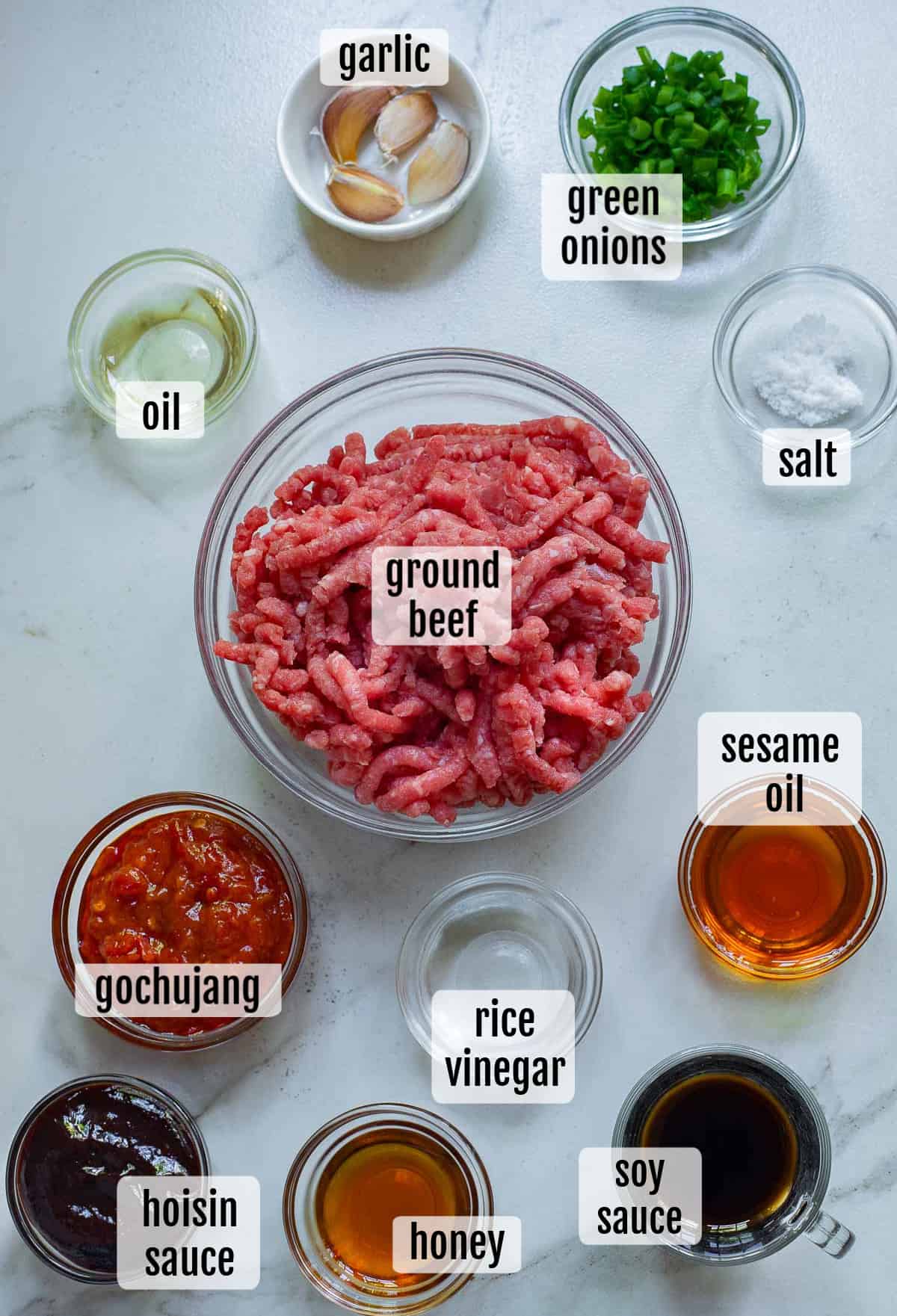
Ingredients You Need
You don’t need a ton of ingredients for this recipe, and if you regularly cook Asian food, most of them are pantry staples that you likely already have in your pantry. Remember, each ingredient brings its unique flair to the dish. Here’s what you need:
- Hoisin sauce: Often known as the Chinese BBQ sauce, hoisin adds sweet-salty flavor. You can find it in most supermarkets in the International foods aisle or online.
- Soy sauce: Provides saltiness and umami. The recipe suggests lower-sodium soy sauce, which balances the flavors without overdoing the salt.
- Rice vinegar: Adds a tangy punch. If unavailable, you can use white wine vinegar or apple cider vinegar as a substitute.
- Gochujang: This Korean red chili paste offers heat and a little sweetness. Like soy sauce, it’s fermented, so it carries a big umami punch, too. It’s increasingly available in supermarkets, but can also be found online or in Asian food stores.
- Sesame oil: Gives a nutty, aromatic dimension. Be sure to use one that is 100 percent toasted sesame oil rather than a product that is blended with another less flavorful oil.
- Ground beef: It’s the star of the show, so buy a good quality product. I like to use a lean ground beef since you’ll want to skim off any excess fat after browning the meat anyway. You can substitute ground turkey or chicken for a lighter version.
- Garlic and green onions: Both add an aromatic finish and the green onions add a bit of color contrast.
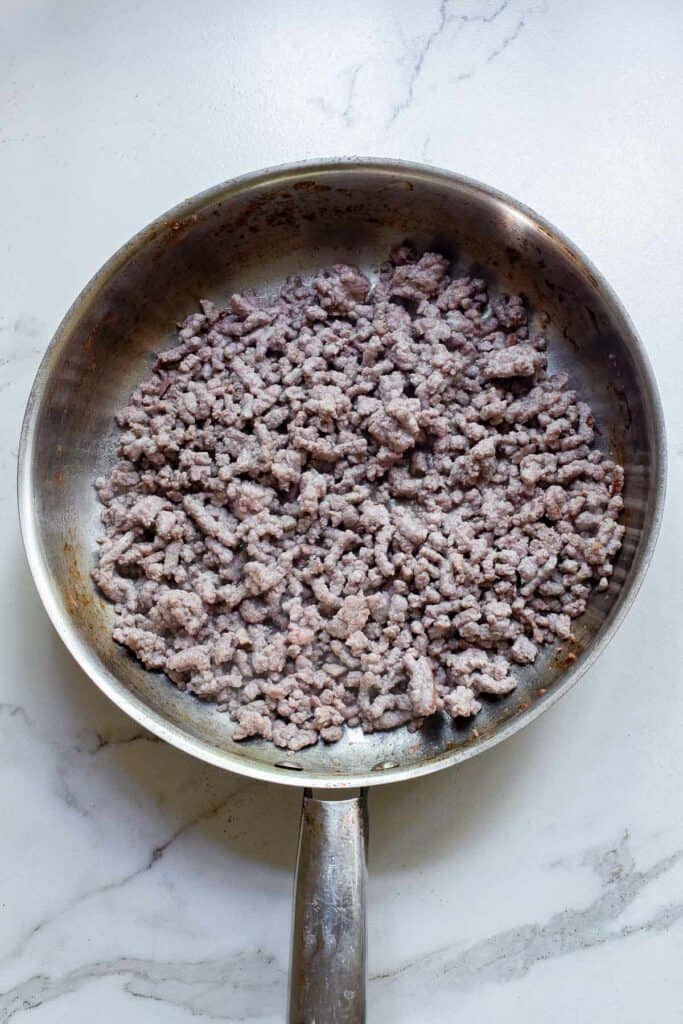
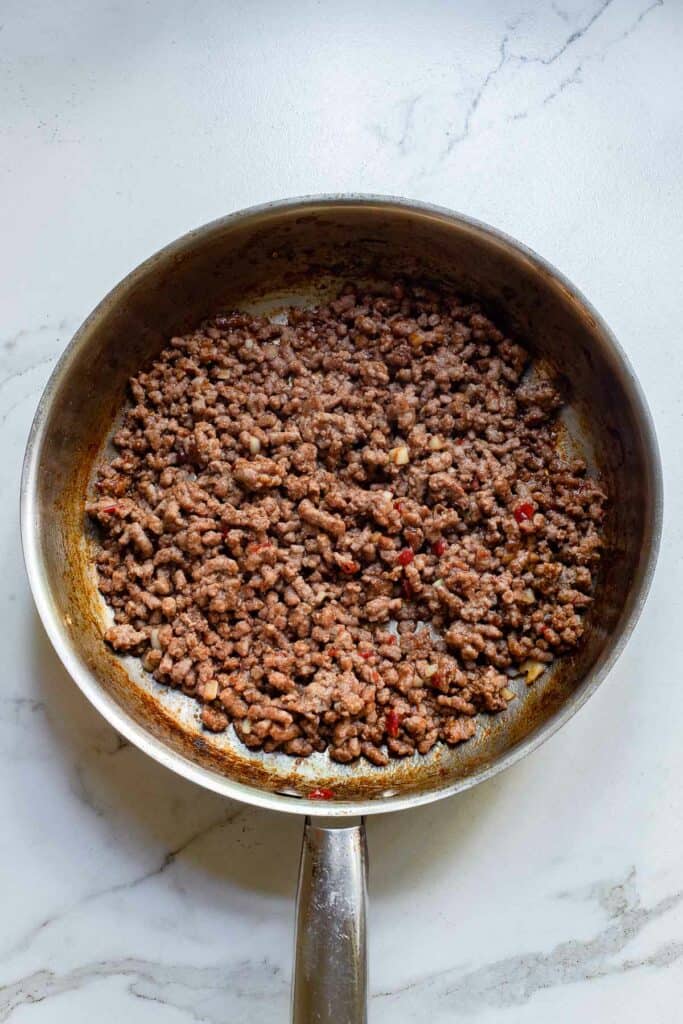
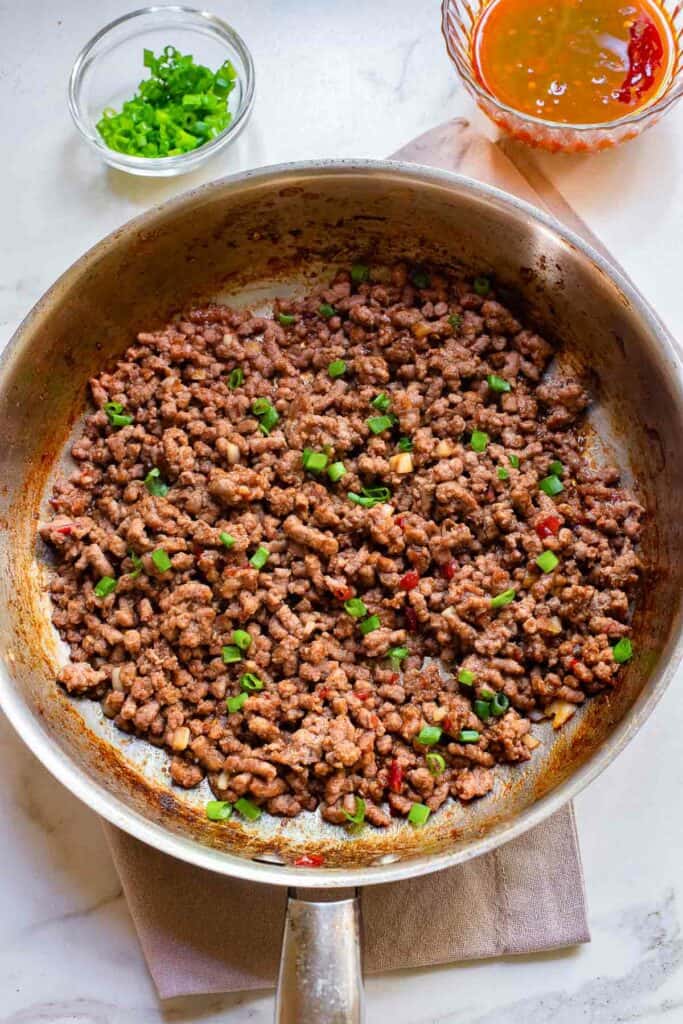
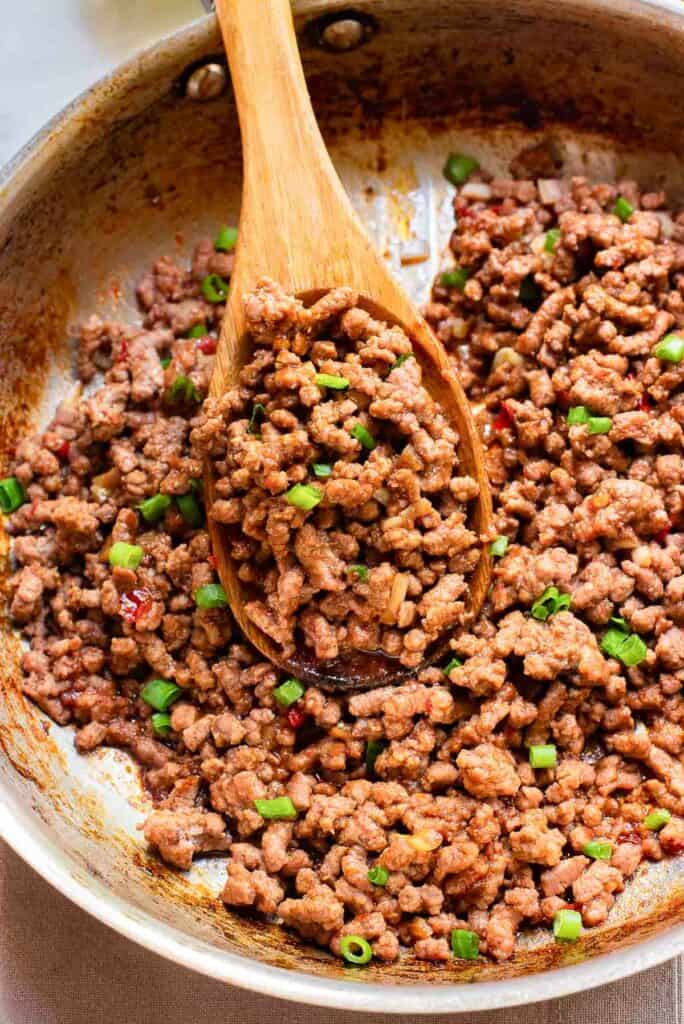
How to Make It
This dish comes together quite effortlessly. Here’s how:
- Start by creating a flavorful cooking sauce by mixing hoisin sauce, soy sauce, gochujang, rice vinegar, and sesame oil.
- Brown the ground beef in a skillet.
- As the beef sizzles away, add the cooking sauce mixture and let it all simmer together until the sauce thickens and turns into a sticky-sweet glaze. The end result is beef that is tender, juicy, and generously coated with the sauce.
- The gochujang sauce brings it all together—this sweet and spicy drizzle takes the dish from great to amazing. This sauce is a simple blend of gochujang, soy sauce, rice vinegar, honey, and sesame oil. Whip it up while the beef is cooking, and drizzle it over the top just before serving.
- Finally, don’t forget to sprinkle sliced scallions on top for a pop of color and a fresh, crisp finish.
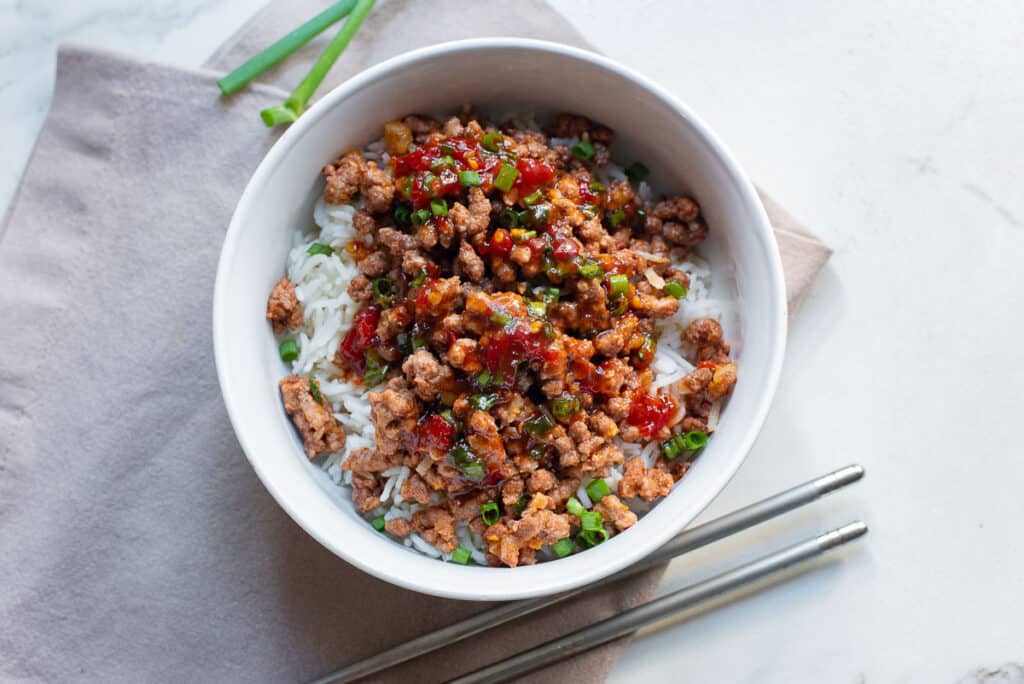
What to Serve with It
The beauty of this Hoisin Beef with Gochujang Sauce is its versatility. Serving it over steamed white rice is classic, but Instant Pot Coconut Rice would be great, too. Either way, the grains soak up all the saucy goodness.
If you don’t want rice, try it over noodles or even with some stir-fried veggies. For a low-carb option, cauliflower rice is a great base.
Cucumber Kimchi or Sunomono make a great cold, crisp side. Or try Spicy Cucumber Salad or Sautéed Lotus Root.
If you want to explore trendy Korean street food, give Korean Hot Dogs a try! Korean Fried Chicken is also a popular quick meal.

Hoisin Beef with Gochujang Sauce
Ingredients
For the beef
- 1/3 cup hoisin sauce
- 3 tablespoons soy sauce I use the lower-sodium one
- 2 tablespoons rice vinegar
- 1 tablespoon gochujang or 1 to 2 teaspoons chile paste
- 1 teaspoon sesame oil
- 1 tablespoon oil
- 2 pounds lean ground beef
- 1 teaspoon salt
- 4 garlic cloves minced
- 4 green onions thinly sliced
For the gochujang sauce
- 3 tablespoons gochujang
- 2 tablespoons soy sauce
- 2 teaspoons rice vinegar
- 2 teaspoons honey
- 1 teaspoon sesame oil
Instructions
- In a small bowl, combine the hoisin sauce, soy sauce, gochujang, rice vinegar, and sesame oil.
- Heat the oil in a large skillet over medium-high heat. Add the ground beef, season with the salt, stir, and break the meat up with a spatula. Cook, turning as needed, until it is browned. Add the garlic and cook for another minute.
- Add the hoisin sauce mixture and bring to a boil. Cook, stirring occasionally, for another minute or two to let the sauce thicken.
- While the meat is cooking, make the gochujang sauce. In a small bowl, stir together the gochujang, soy sauce, rice vinegar, honey, and sesame oil until smooth and well combined.
- Serve over steamed white rice, with the gochujang sauce drizzled over the top, and garnished with the scallions.



I loved that you could adjust the spice level of the beef and the green onions really bring out a pop of flavor. Such a tasty weeknight meal!
This was delicious! It was full of flavor and perfect to serve on a busy weeknight! My family loved it over brown rice!
This was such a tasty recipe and I can’t believe how quickly it comes together. I’ve saved this as a weekly go-to when I need something to do with ground beef that’s not the regular boring flavors. Everyone loved this dinner!
I was looking for a great stirfry and this really hit the spot! Thanks!
This Hoisin Beef with Gochujang Sauce is one of my favorite dishes! The sweet and spicy combination made the dish pop, and the beef was very tender.
This was really delicious and super easy to make. I loved the heat from the gochujang sauce. The Hoisin sauce adds a bit of sweetness so while it does have a kick, it’s not too hot, which was perfect for my littles. Yum!
This was great and so easy to make. The gochujang sauce really makes it!
I just tried this recipe for a dinner date with my girlfriend and we loved the result, soooo tasty!
This was so delicious! My family loved it over brown rice! I will definitely be making this again very soon!